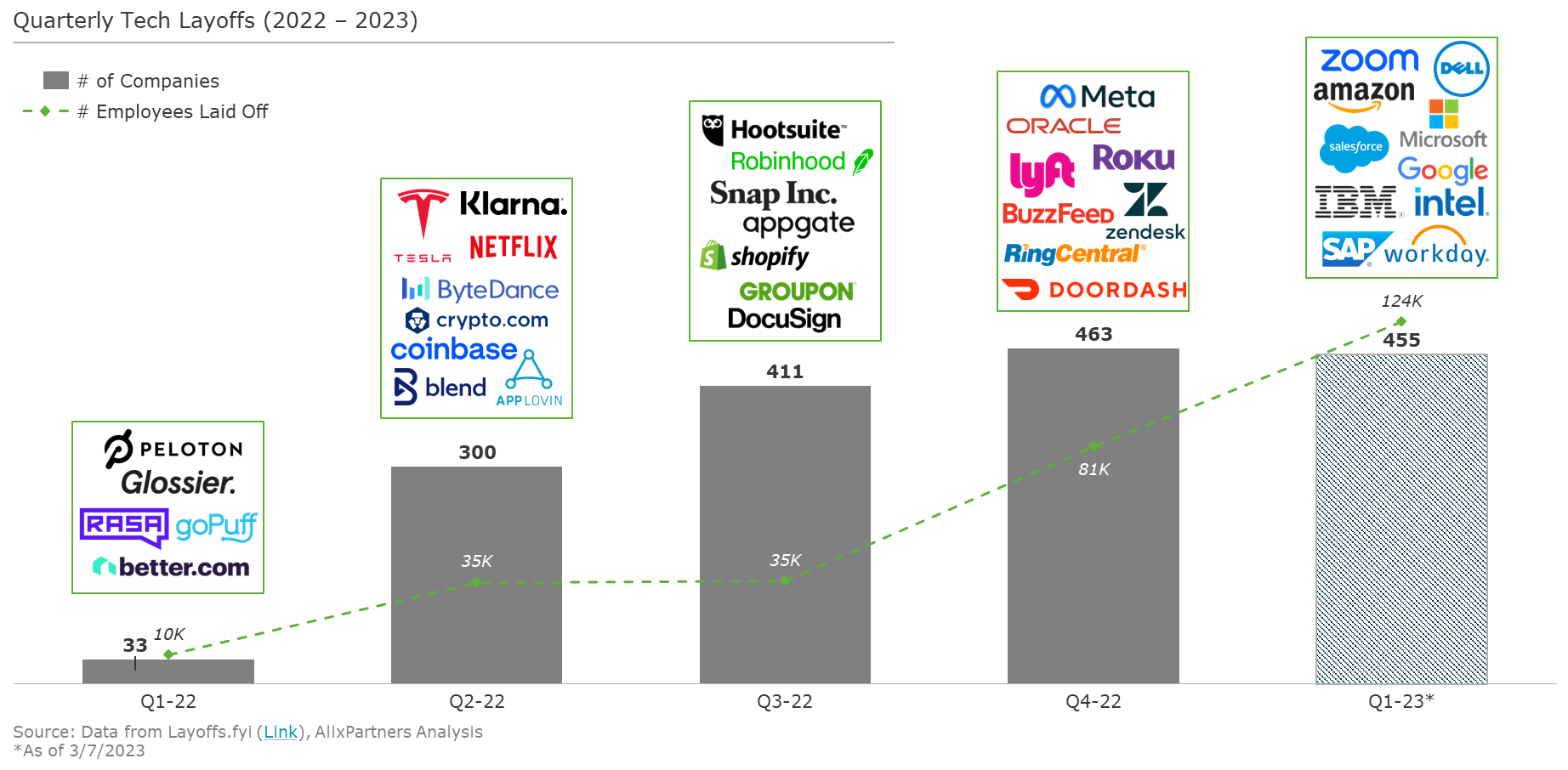For the past eight months, tech companies have shifted focus from a relentless pursuit of growth to profitability and cost structure optimization. Tech valuations continue to slide due to macroeconomic pressures including inflation, higher interest rates, and reduced enterprise spending. At the end of January, software valuations were 30-40% below 2021 highs, and companies are struggling to generate positive cash flow from operations.
Effectively, the market is resetting itself post-pandemic. This process has yet to find its resting point, so now is the time for tech companies to future-proof their business models.
Many in tech responded to these pressures through headcount reductions. Last month alone (January 2023), over 200 tech companies announced job cuts. Monthly tech layoffs averaged 170 companies per month from June 2022 to January 2023.

Source: S&P CapitalIQ data, AlixPartners Analysis
Typically, layoff programs start by assigning “percentage targets” to each function. Job losses skew toward lower-level individuals and non-core activities. However, the material impact of these actions is often limited. This leads to multiple layoff rounds as companies try to keep up with market dynamics and redress excess hiring.
Multiple rounds of cuts damage company morale, reputation, and productivity, which can create anxiety, fatigue, and whiplash among the employees who remain. They also negatively impact future talent acquisition, particularly as younger generations place increased value on job security over flexibility.

Source: Layoffs.fyi, AlixPartners Analysis
We believe there is a better way.
Companies should focus on sustainable operations, which will drive profitable growth. Optimize every aspect of your cost structure and make your operations leaner, faster, and more efficient—without cutting the muscle that sustains performance.
Think hard, cut deep, cut quick, move on
Reductions should be swift and limited to two rounds at most—often in the double-digit percentages. Your new-and-improved roadmap should be visible to employees so they can take part in the transformation with clarity on the role they play. Transparency and clear communication are critical. Otherwise, employees will likely fear additional cuts.
At AlixPartners, we recently helped a mid-size B2B SaaS company adjust its cost structure with an eye toward the future. We did this by:
- Identifying structural organizational changes and cost improvement areas.
- Creating a transformation office to manage execution and communication of changes.
- Speaking with every executive to define the new operating model and resource level of each function.
- Drafting a detailed execution plan for each initiative to follow.
These actions reduced total headcount by nearly 25%, delivering more than $120M in savings. More importantly long-term, they resulted in a radical shift in the company’s operations and overall level of productivity. Simplification, automation, and reduction of internal friction proved critical elements to success.
In parallel, we helped the company identify areas for potential reinvestment and future bets where it could deploy capital. We also boosted software development effectiveness, increased sales productivity, optimized the product roadmap, and prepared the company for a new growth wave.
While tech layoffs show no signs of slowing soon, forward-looking companies will focus on bringing their employees along on the journey. This will improve morale and performance, and help build a sustainable, efficient organization prepared to face future headwinds.


